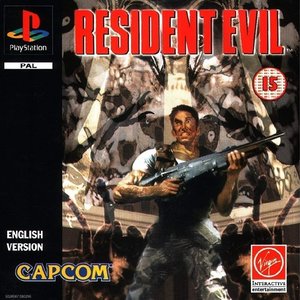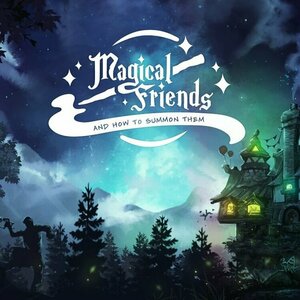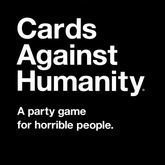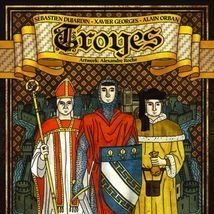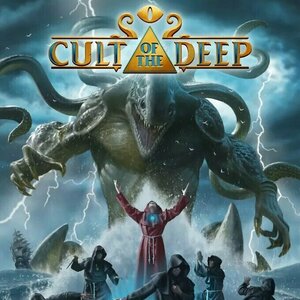Matthew Krueger (10051 KP) rated the PlayStation version of Resident Evil in Video Games
Jun 27, 2020 (Updated Jun 27, 2020)
The plot: Chris Redfield and Jill Valentine, are members of an elite task force known as S.T.A.R.S., as they investigate the outskirts of Raccoon City following the disappearance of their team members. They soon become trapped in a mansion infested with zombies and other monsters. The player, having selected to play as Chris or Jill at the start of the game, must explore the mansion to uncover its secrets.
Gameplay: The player's character is a member of a special law enforcement task force who is trapped in a mansion populated by dangerous mutated creatures. The objective of the game is to uncover the mystery of the mansion and ultimately escape alive.
To fulfill the game's objective, the player uncovers various documents that provide exposition about the game's narrative, as well as clues that help them solve various puzzles within the mansion. Key items are also available that give the player access to other items or new areas. The player can arm their character with weapons to defend themselves from enemies, although the ammunition available for each firearm is limited and the player must learn to conserve the ammunition they have for situations where they will really need it
The carrying capacity of the player is limited depending on the character and items that the player does not wish to carry at the moment can be stored into an item box to be retrieved for later use. To save their progress, the player must pick up an ink ribbon and use it on any of the typewriters scattered through key locations in the game. However, the supply of ink ribbons the player can acquire is limited much like the player's ammo and healing supplies. Players will encounter and fight various infected creatures as flesh-eating zombies, undead dogs, giant spiders, and other monsters.
Resident Evil was very well received critically and commercially, and is often credited for defining the survival horror genre. Beyond video games, Resident Evil has been credited with re-popularising zombies in mainstream popular culture from the late 1990s onwards (along with The House of the Dead), leading to a renewed interest in zombie films during the 2000s. Resident Evil has since been hailed as one of the most influential and greatest video games of all time. Its success has spawned a multimedia franchise including video games, films, comics, novels, and other merchandise. The game has received dedicated ports to the Sega Saturn, Windows, and Nintendo DS. In 2002, a remake of the same name was released for the GameCube featuring updated graphics, sound, and changes to the gameplay and story. A high-definition remaster of the GameCube game was released in 2015 for modern platforms.
Resident Evil- is one of my favorite survivor horror games of all time and one of my favorite games of all times. Its intense, thrilling, suspenseful and overall scary. Resident Evil is a must to play, if you haven't already. Will you survivie the manison or not!
Purple Phoenix Games (2266 KP) rated Magical Friends and How to Summon Them in Tabletop Games
Sep 29, 2021
Disclaimer: We were provided with a prototype copy of this game for the purposes of this preview. The components pictured are not finalized, and could change after a successful Kickstarter campaign. I do not intend to rehash the entire rulebook, but rather provide a general overview of the rules and gameplay. For more information, head to the Magical Friends website. -L
Magical Friends and How to Summon Them (referred to as just Magical Friends from hereon out) is a strategic game of card drafting and variable turn order in which players take on the roles of mages attempting to summon the most magical creatures to the local tavern in order to win the Midsummer festival competition. Played over 8 rounds, players will take turns summoning creatures, moving them towards the tavern, using special creature abilities, and occasionally fighting off your opponents’ creatures. The player who gets the most creatures to the tavern by the end of the 8th round is the winner! To setup for the game, lay out the main board and summoning board in the center of the table. Take the 4 double-sided map tiles, randomly choose a side, and place them in their corresponding places on the main board. Shuffle the Summoning cards and reveal a number of cards, determined by player count, to create a market row and preview row. Each player receives a player mat, heart tokens, and Artifact Cards in their chosen color. Place the round marker on Round 1 of the main board, select a player to get the starting player token, and the game is ready to begin!
To start a round, first you will need to determine turn order. Each player has an identical deck of 11 Artifact Cards, numbered 1-11. The player who offers the most powerful (highest number) Artifact gets to act first in the round. The player with the starting player token chooses their card first, and places it face-up on their player mat. The next player, in clockwise order, will do the same. Here’s the catch though – once a number has been played, it cannot be played by anyone else for this round! So say I put choose my value 8 card – no other player may choose that card for this round. Once all players have chosen their Artifacts, determine the turn order for the round. The player with the highest valued Artifact goes first, then the next highest, and so on.
Once the turn order has been determined, it is time for players to take their turns! On your turn, the first thing you will do is to select a Summoning card from the Summoning board and take it into their tableau. The selected card tells you which friend (creature) you have summoned, and tells you how many moves/what types of movement you may take this round. After choosing your Summoning card, you will take any/all of the following actions: Summon a friend (bring its standee into play), use basic movement (as determined by your new friend), use bonus movement (from other cards), or use the abilities of any friends in your tableau. You may perform as many of these actions as you want and are able to perform. It is important to note that each friend may only use one basic movement and one bonus movement per round. So you can’t just move a single friend with every movement available in one turn.
Once you are finished performing actions, you will end your turn. Refresh the Summoning board by shifting cards down and refilling any empty creature slots. Play then moves to the player with the next highest valued Artifact card. When all players have taken their turn, the round ends. Move the Round marker up one spot, and pass the starting player token to the next clockwise player. A new round will then start with the turn order determination, beginning with the new starting player. After 8 rounds of play, the winner is crowned. Players score points for the number of their friends who reached the tavern, and the player with the highest score wins!
I’ll come right out and say that I really have enjoyed Magical Friends. There are lots of elements that I like and that work well together to create a fun, strategic, and engaging game. First, turn order determination. I love that the turn order isn’t set for the entire game, because that could really be a detriment to whomever would be last every round. Being able to ‘bid’ for turn order, in a sense, allows players to be proactive (or conversely, reactive) with their strategy. And after you’ve used an Artifact card in a round, it is discarded and cannot be used for the rest of the game. So you need to decide when it’s worth it to play your high value cards to hopefully act first, or if you’re willing to risk playing a mid-value card that might be out-bid by an opponent.
The other awesome strategic element are the friends in the game. Each friend is a different creature with different movement options and special abilities during gameplay. An important thing to note is that although every friend has a printed movement value on its card, you may only ever use that value on the round in which you summon that friend. So a Griffin, for example, lets you move 3 friends 2 spaces, which you may do when you first summon the Griffin. But in future rounds, the Griffin will only move based on the movements provided by the most newly acquired friend. Maybe you don’t necessarily want to summon a Mermaid, but the movement she offers is exactly what you need to get some friends to the tavern for scoring. It’s all a neat mix of strategy that you are changing with every turn. Along with the movements, each friend has a special ability that can be used on your turns. Some abilities allow you to move extra spaces, move opponents, or even slay creatures. When you slay a creature, you collect its heart token for endgame scoring, and the player who controlled that creature gets a Pity Power card (which provide bonus movement). You need to decide when to move which friends, and in what order to trigger your abilities. You must always be paying attention to the board layout and your opponents’ turns as they will help you determine your strategy for future turns.
Components. As I mentioned earlier, this is a prototype version of the game, but with that said, the components are pretty nice! The cards are sturdy, the text is clear, and the artwork is fun to look at. The main game board and summoning boards are colorful, and the creature standees are nicely sized for the board. I do have to say that I really like the heart tokens used to identify to whom each creature belongs on the board. The hearts slide over top of the standee and create a base of sorts to color-code every creature on the board. Just a neat little use of components that make the gameplay smooth. And how about the insert? It’s awesome! The standees are all stored, assembled, in a slotted inlay that allows for quick selection of creatures. I hope that’s something that makes it to final production because it really helps streamline the gameplay. Some of the wording in the rulebook could use some clarification, but I know that it is still a work in progress and continues to undergo edits. The only negative I would have to say is that 2 of the player colors are black and gray – and they are sometimes difficult to differentiate between. But changing one color should be an easy fix!
All in all, I was pleasantly surprised by Magical Friends. At first glance, I thought it would be a pretty simple ‘roll-and-move’ type game, but it proved to be much more strategic and engaging than I initially thought. The variable turn order, the movement rules/restrictions, and the unique friend abilities all work together to create a cohesive, thematic, and strategic game. I very much am looking forward to following the progress of Magical Friends and How to Summon Them on Kickstarter, and I encourage you to check it out as well!
Rikki Hammond (33 KP) rated Cards Against Humanity in Tabletop Games
May 28, 2019
There are some genuinely insensitive cards contained within this game, but you need to leave your morals at the door when you begin playing, and you will have some incredibly funny moments.
For those that don't know how this game plays, each player takes it in turns to read a question from the stack of black cards, and every other player picks one (or two if it's a double answer) white card from their hand of ten. Once everyone's chosen, the black card player reads everyone's white cards and picks what they think is the best response to the question. The winning player than keeps the black card, to show they won that question. If you feel you ha e a duff hand, you can trade in one of your black cards to pick up ten new white cards from the stacks.
Once everyone decides they've had enough playing, whoever has the most black cards at the end wins.
Many have tried to imitate this game, but few have succeeded, and I feel Cards Against Humanity will still be a top party game for many years to come.
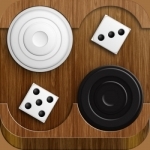
Backgammon+
Games and Entertainment
App
One of the oldest board games and the first ever Backgammon game for iPhone by Adikus, is now...
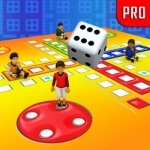
Ludo Adventure Fun 3D
Games and Entertainment
App
(Game Name) has four players red, green, blue and yellow. Are you ready for the royal adventure?...
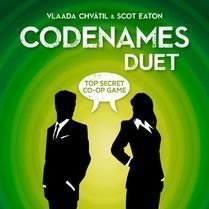
Codenames Duet
Tabletop Game
Codenames duet keeps the basic elements of codenames - give one-word clues to try to get someone to...
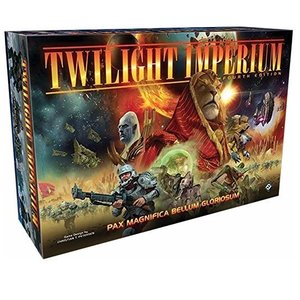
Twilight Imperium Fourth Edition
Tabletop Game Watch
Twilight Imperium (Fourth Edition) is a game of galactic conquest in which three to six players take...
Purple Phoenix Games (2266 KP) rated Cult of the Deep in Tabletop Games
Feb 24, 2021
Cult of the Deep is a dice-driven, fantasy horror, hidden role game with similarities to some classic games. In it players will be donning the personas (personae?) of cultists with different roles and agendas. Players will be forming alliances with other cultists of unknown roles and possibly having their character perish and return to play as a Wraith with a totally new agenda. Each cultist’s role will have their own victory conditions to fulfill and the game ends once a player (or players) have fulfilling their victory conditions.
DISCLAIMER: We were provided a prototype copy of this game for the purposes of this review. These are preview copy components, and I do not know for sure if the final components will be any different from these shown. Also, it is not my intention to detail every rule in the game, as there are just too many. You are invited to download the rulebook, back the game through the Kickstarter campaign, or through any retailers stocking it after fulfillment. -T
Setup involves placing out the Altar Boards and Ritual Cards upon them. Players will also receive one Role, Character, Sigil, and Reference Card to use during play. Players will reveal their Character Cards and collect enough Life Tokens to equal what is shown upon these cards. Each set of dice and the coins are to be set on the table within reach. The player who received the High Priest Role Card reveals it, takes extra Life Counters, and becomes the first player. They take five Cultist Dice and the game may begin!
Each turn is divided into four phases: Roll, Commit, Response, Resolve. During the Roll phase the active player will roll five dice, and any dice may be re-rolled another two times. Once all re-rolls are complete or the player decides to stop, they will take each die and Commit them to other players, altars, or themselves. For example, if the player rolls two blood drop icons they may wish to heal themselves by two, so they can commit these dice to themselves. Should this player also have rolled any dagger icons they may commit these dice to other players in order to attack them for one life per icon. If any player has a special ability that can be enacted during the Response phase, they must now use it. One such ability may be turning a one-dagger icon into a two-dagger icon, or other abilities. Once all players have had a chance to activate any abilities during this phase, the dice must now be Resolved in any order of the active player’s choosing. So now the player can regain life counters (or even surpass their starting life total), attack other players’ life points, or activate any Altar abilities if dice were placed on Ritual Cards on altars.
The Resolve phase is where the action happens, and can lead to some serious actions. Players can be killed, Rituals can be activated, and players can be healed. If a Ritual is completed (no more activation slots remaining) during this phase, the active player becomes the Keeper of the Ritual and collects its card from the altar to be used for an immediate effect, or an ongoing effect for the rest of the game. Should a player be slain, they may return to the game as a Wraith, and thus draws a Wraith card (shown below) to now represent their altered state. Wraiths play the game differently, as they will not be able to commit any dice during their turn, but rather have their dice to be used during other cultists’ Response phases.
Play continues in this fashion of taking turns around the table until victory conditions have been met for a player or group of players. The game may be over, but the lasting effects of the results will remain in each player’s heart for some time.
Components. Again, this is a prototype copy of the game, so not all components are as they will be in the finished version. That said, we received an excellent prototype copy of the game. The cards are great, the cardboard components are equally great, and I know we were provided with examples of the Kickstarter exclusive add-on metal coins, but I certainly would spring for them. These coins are the real deal and just feel amazing to handle. I know the dice will be different upon a successful campaign, as stickered dice simply will not hold up to many plays (and I see on the KS page that the d4s will have numbers ON TOP, which is where they should be). So once all is said and done, I believe this will be a beautiful, if not dark, game with excellent components and art style.
I mentioned in my open that this game reminds me of bits of other classic games. Perhaps you were able to discern these in my description, but here are my thoughts. I enjoy dice-based hidden-role games like BANG! The Dice Game. Cult of the Deep feels similar in that players may suss out roles of other players simply by attacking them until roles are revealed or cultists slain. This is not the ideal strategy, as I have been repeatedly told by my wife, but it certain is effective. What is improved here is that players come back as Wraiths and really are not ever out of the game. This is very good, as I usually am the player who is ganged up on and first to exit any game of this type.
Secondly, rolling dice and then committing them to certain areas of the game feels extremely reminiscent of the classic Biblios. Biblios uses cards and each turn the different areas MUST be committed to, but here again Cult of the Deep improves on this mechanic by allowing the player to choose every location to which they wish to commit their dice. Maybe every turn a player will commit daggers to one player (more than likely the High Priest), or certain dice faces to heal another player, but it is not necessary, and always being aware of what faces the Rituals need to progress will also dissuade players from ganging on one player each turn.
I didn’t mention it in my description, but each player is also given a Sigil card that can be used once per game, and they are especially powerful. Having so many choices available during a turn, or even during other players’ turns makes this game unique and incredibly enjoyable.
If you are looking for a game that has that Cthulhu-esque theme, hints of other classic game mechanics, and a deluxe look, then Cult of the Deep is certainly highly recommended. It is a notch more difficult than BANG! The Dice Game, and utilizes Biblios’s resource allocation mechanic better, thus creating a great blend of each. I do think you should check out the Kickstarter campaign ending Wednesday, March 3, 2021 to back it and add it to your collection. Obviously, this isn’t for everyone, but if you have read this far, I will assume at least a small measure of interest. I believe it will be a great game to have available for the right group of people who can handle the theme and don’t mind dying and becoming a character in Lord of the Rings.
